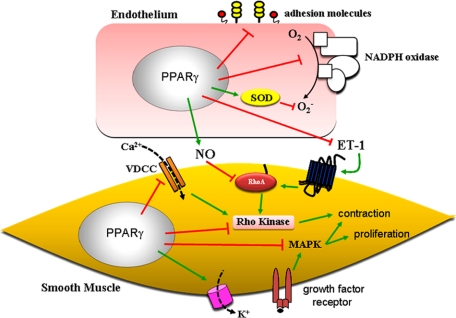FIGURE 2.
Summary of PPARγ-mediated effects on pathways in the endothelium and vascular smooth muscle. PPARγ affects gene expression and consequently the vascular phenotype via PPRE-dependent transactivation and the transrepression mechanism as shown in Fig. 1. In ECs, activation of PPARγ reduces inflammation, reactive oxygen species, and ET-1 release while increasing NO bioavailability. In VSMCs, PPARγ ligand mediates inhibition of Ca2+ influx through the voltage-dependent Ca2+ channel (VDCC) and blunts Rho kinase activation. Moreover, TZDs prevent VSMC proliferation by inhibiting growth factor signaling. Therefore, PPARγ may control BP homeostasis by regulating the balance between vasodilation and vasoconstriction. SOD, superoxide dismutase; MAPK, mitogen-activated protein kinase.

